Grow elegant, variegated plants with long leaves to add life to your home. These beautiful indoor houseplants are perfect for all climates while adding a unique and elegant look to any room in the house.
Plants with long, thin leaves are perfect for decorating any room with their elegant and slender look. The appearance of these variegated leaves makes the plant more resistant to heat, dryness, and freezing temperatures.
It means that they are often easy to care for as they can withstand difficult situations, and that’s the exact reason they evolved this way.
In this article, we will look at the wide range of beautiful houseplants with long leaves you can grow in your house.
If you already have your own beloved houseplant, but don’t know what plant it is, you will most likely learn its common name, and even botanical name, here!
1. Ponytail Palm (Beaucarnea recurvata)
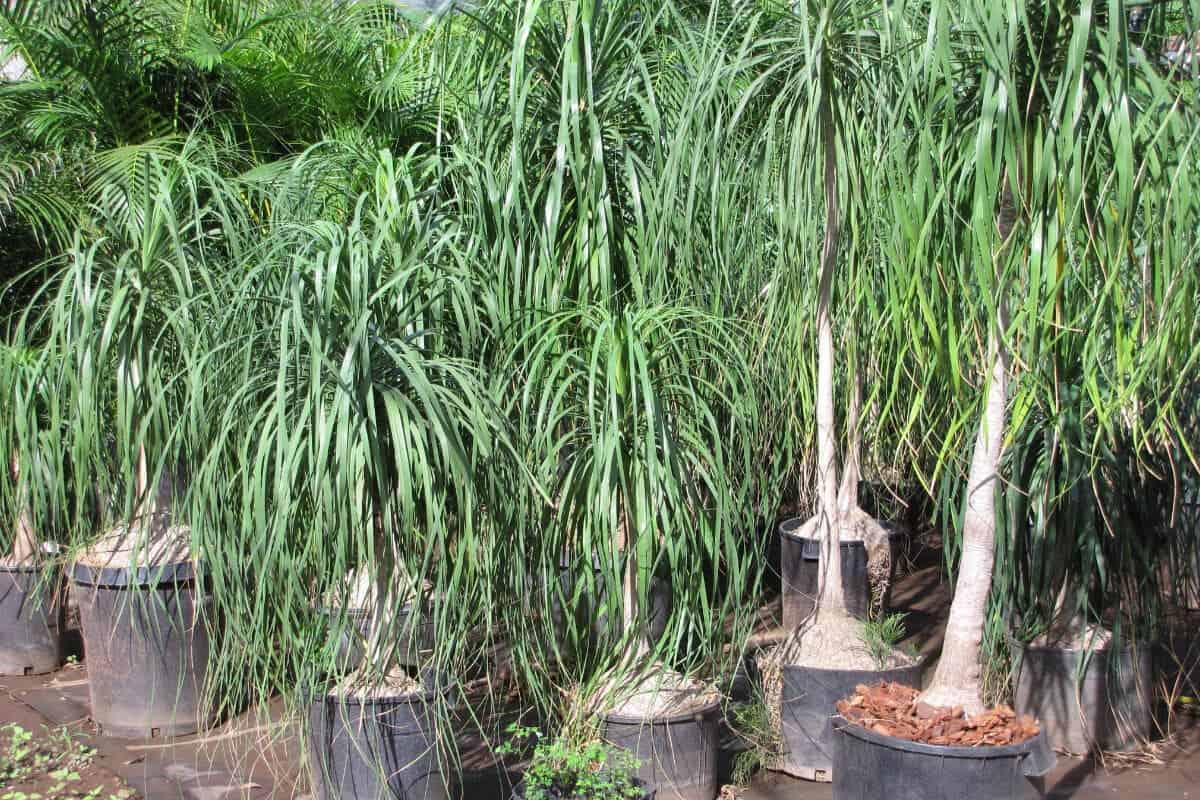
The Ponytail Palm may be the indoor plant with the thinnest leaves you could find. This indoor palm tree has very long leaves that curl around the central piece of stem, giving it a romantic look similar to a Weeping Willow.
These leaves can even be 3 feet tall as an indoor plant, and double that outdoors.
The Ponytail Palm doesn’t need to be watered often and it won’t suffer excessive water loss as its trunk can store water. It prefers direct sunlight, but it can withstand some shade.
The best soil to use is one for succulents, as this plant is actually not a palm, but belongs instead to the Agave family.
Learn all about Ponytail Palms.
2. Parlor Palm (Chamaedorea elegans)
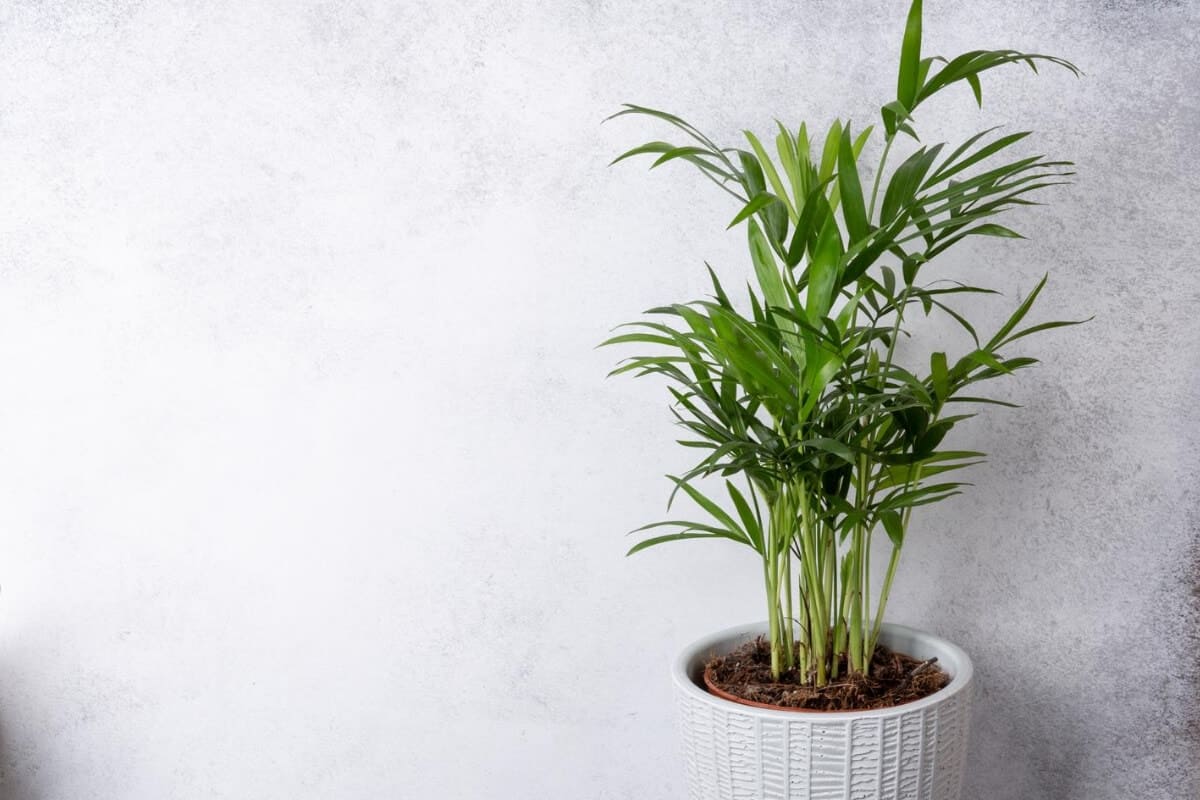
The Parlor Palm is one of the easiest to grow as an indoor plant, and it’s very beautiful with its vibrant green fronds.
The danger with Parlor Palms is actually of ‘loving them to death’—that means overwatering them or providing too much sunlight.
It’s best to let at least an inch of soil dry before giving Parlor Palms a drink again, and they need indirect light to thrive. Parlor Palms are very slow growing but, given a few years, they can reach six feet tall.
This is nothing compared to their lifespan, as they can easily survive for decades indoors.
3. Agave (Agave boscii)
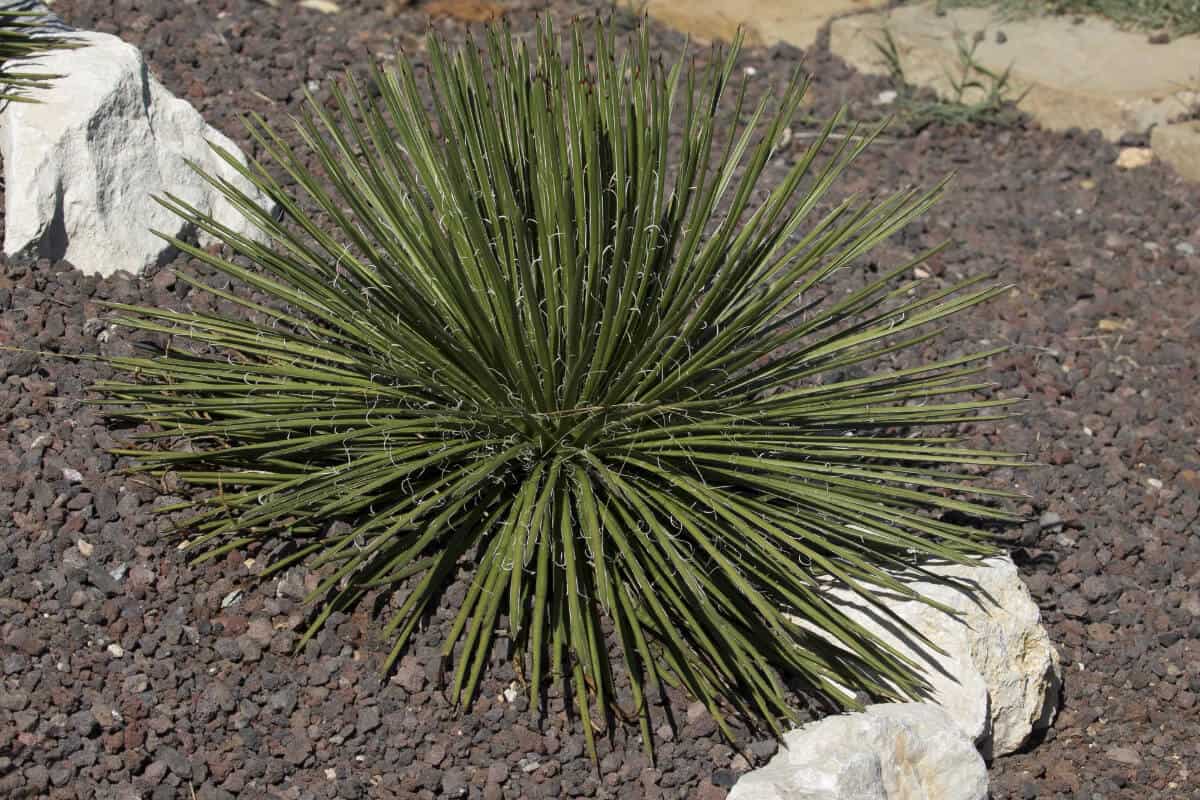
Agave boscii is also called Twin-flowered Agave, as its most stunning feature are its greenish-yellow flowers.
Its flowers bloom just once in the life of the plant, but it’s worth waiting for them as the stems can be up to 9 feet tall. The plant itself isn’t very big, however, and can only reach about 15 inches maximum in both height and width.
The Agave makes up for its small size by producing up to 200 very thin leaves.
Agave boscii needs plenty of sunlight and little water.
4. Aloe Candlestick (Aloe arborescens)
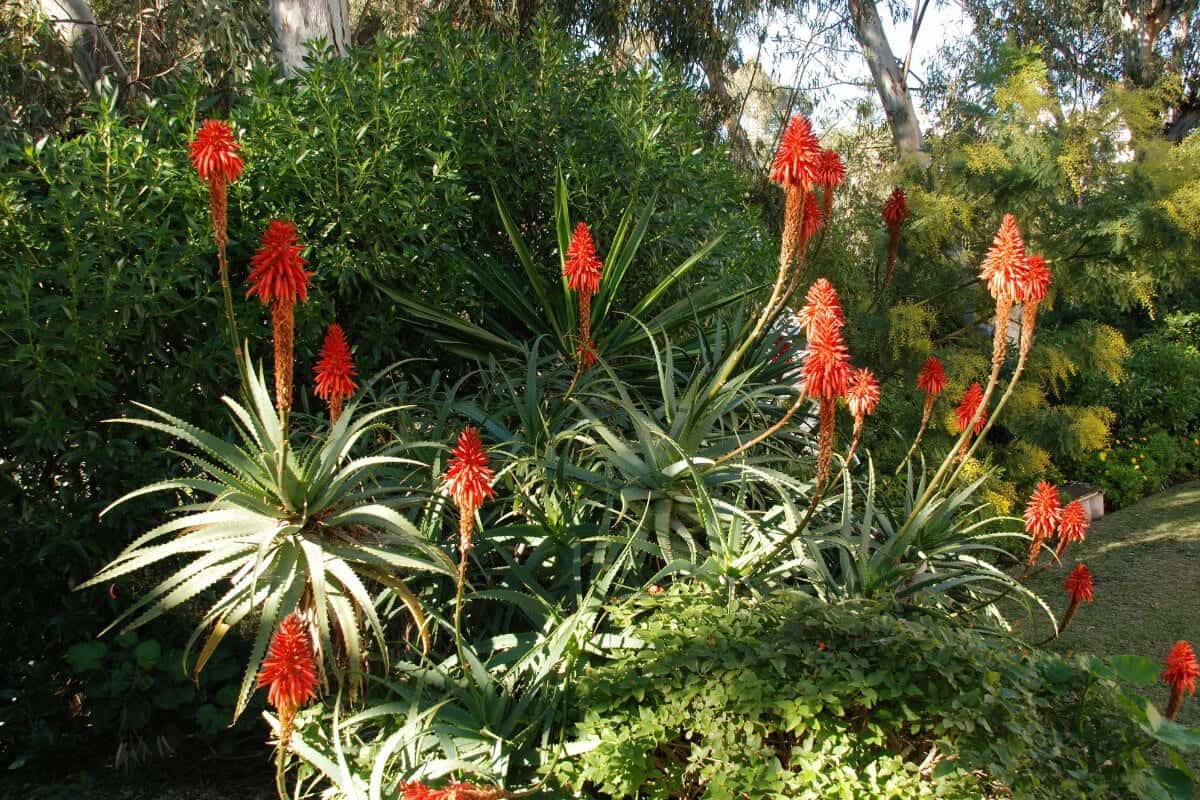
Aloe arborescens is another succulent with long, thin leaves that needs direct light and little watering.
The shape of this popular houseplant can resemble a bush as the main piece of stem forms many branches. The leaves are carried in rosettes at the top of the branches and the flowers develop in their center during the winter.
Aloe arborescens can grow up to 4 feet tall, but it’s easy to keep it smaller through careful pruning.
5. Aloe vera (Aloe barbadensis miller)
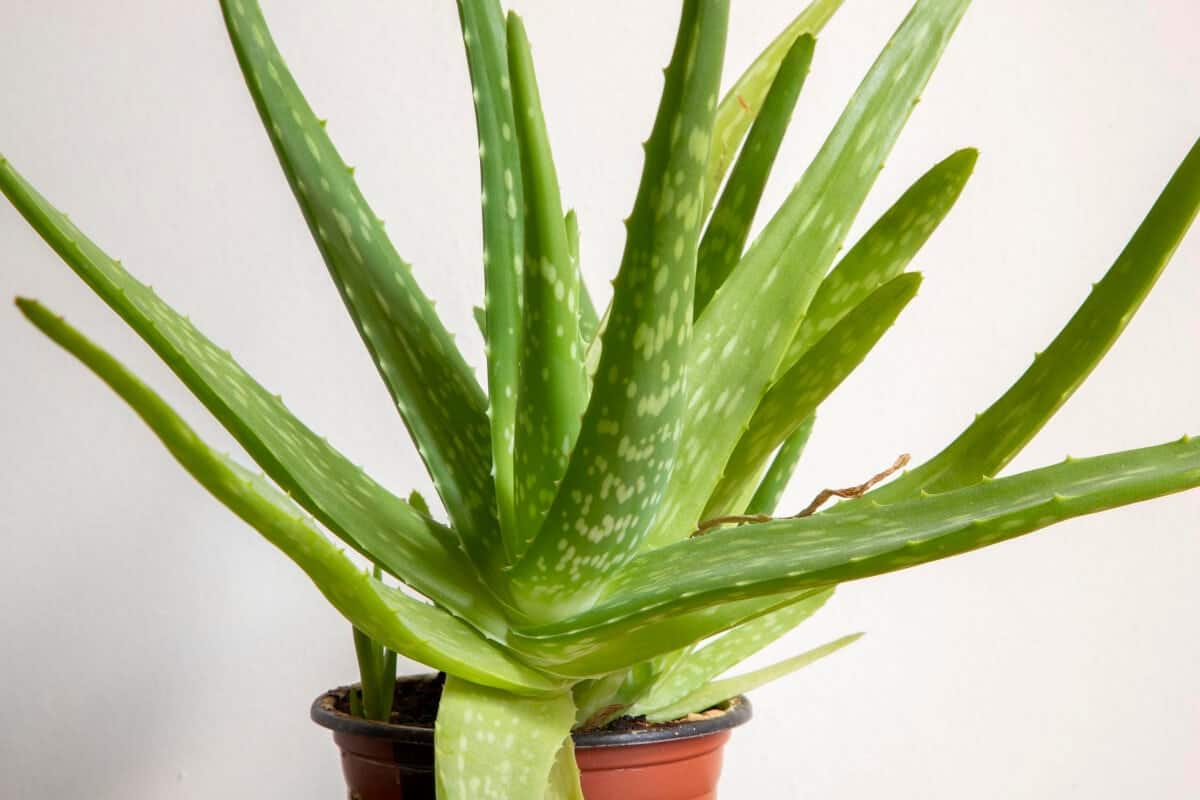
Aloe vera is the most classic houseplant and the most famous succulent plant. Its leaves aren’t the narrowest, but they can be up to 18 inches long in the largest specimens.
Make sure to choose the one that best suits your needs carefully as there’s a wide range of common varieties of aloe and they can differ greatly in their sizes.
Aloes only need to be watered about once every three weeks during the warm season, and even less in the winter, as they prefer dry soil for succulents.
They thrive in warm temperatures and bright light, but you should avoid exposing them to direct sunlight for too long as they only require indirect sunlight.
6. Zebra Plant (Haworthia fasciata)
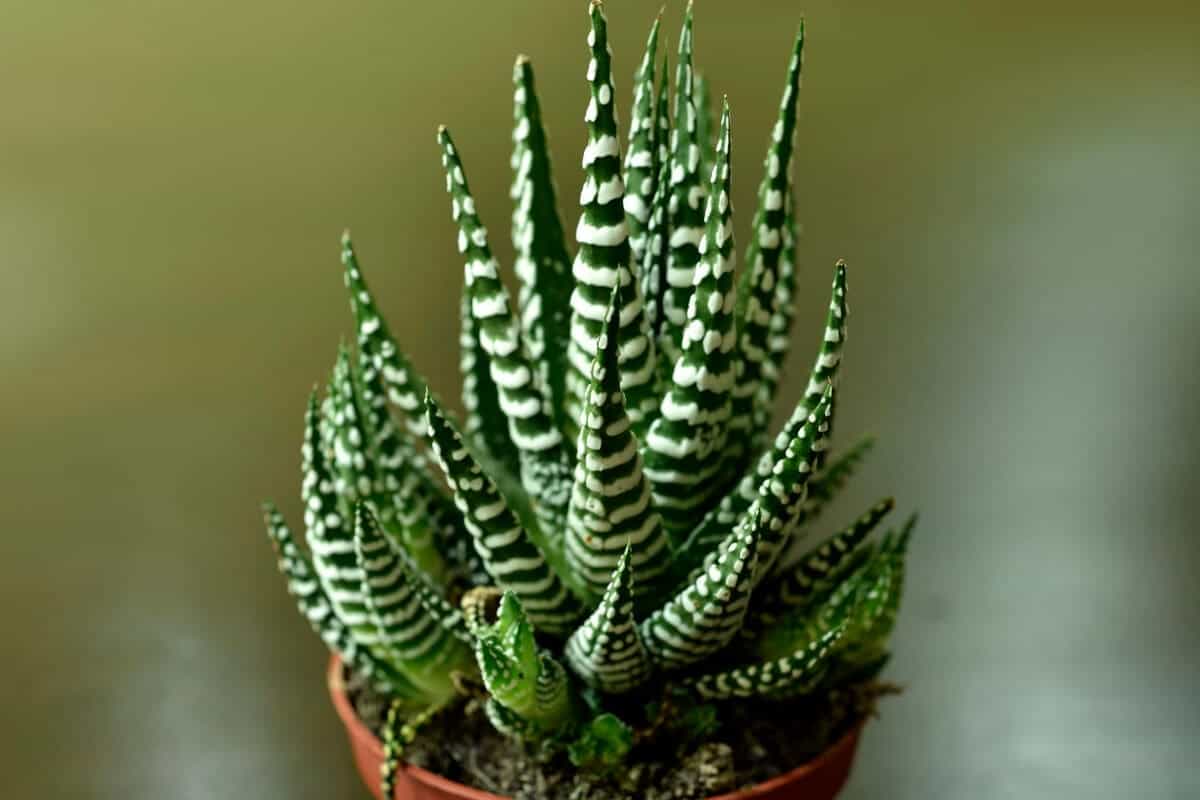
The Zebra Plant is a slow-grower, and it’s a succulent with striped leaves. It might take years, but these leaves can grow more than 5 inches long.
It’s quite similar to Aloe vera, with its plump, triangular leaves, but it can be identified easily, thanks to its horizontal stripes.
Like aloes, it doesn’t need much water and prefers warm temperatures, even if direct sunlight should be avoided as it only requires indirect light.
7. Himalaya Groundsel (Senecio himalaya)

The Himalaya Groundsel is ideal for people who love thin and attractive leaves but still want a plant to look lush and full.
The leaves of this majestic plant are numerous and tightly packed, even if the plant stays quite small at just about 10 inches.
Senecio himalaya tolerates shade and cold seasons, even if it prefers warmer environments with high humidity and 4-6 hours of sunlight each day.
8. Vase Plant (Guzmania lingulata)
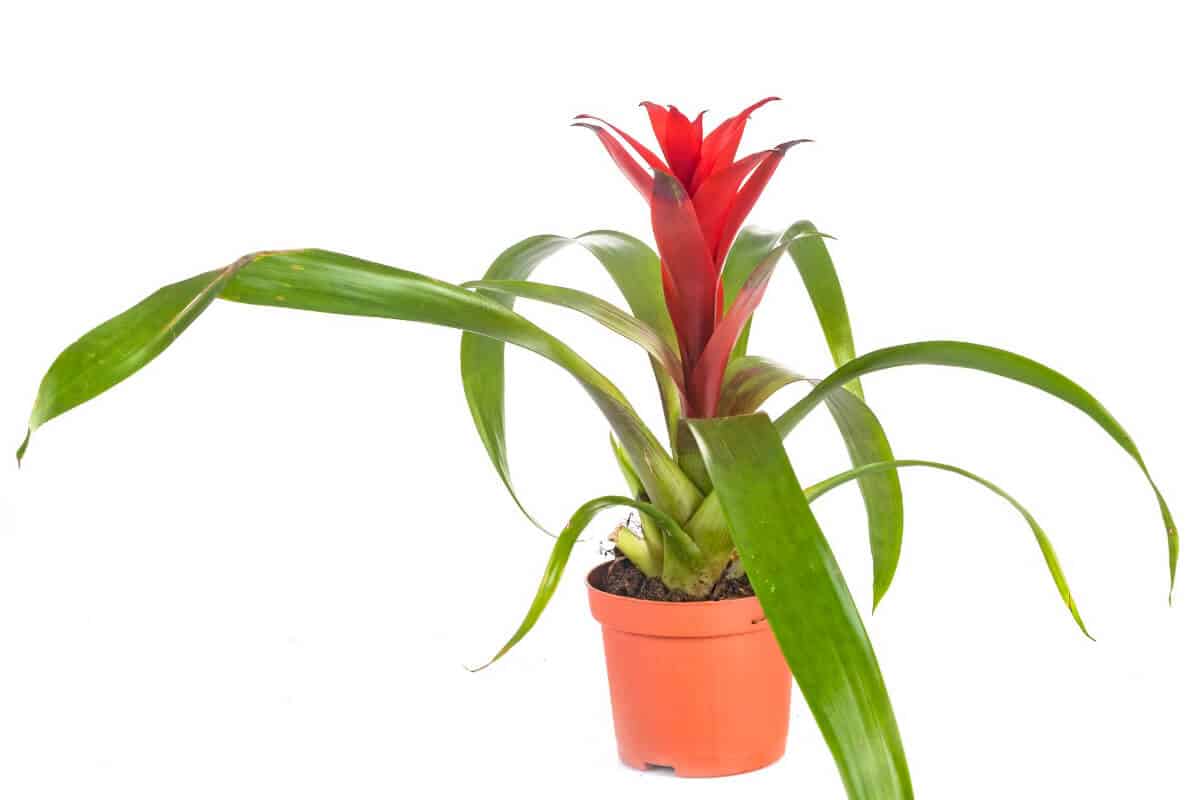
Guzmania lingulata has elegant, ribbon-like leaves that grow around a central red flower.
The flower stem can be up to 1.67 feet tall, but it only appears once, after which the plant will die.
Guzmania lingulata is a bromeliad, a family of tropical plants which need plenty of bright light and humid conditions. These plants also need mild temperatures all year, as the cold makes them suffer.
9. Spider Plant (Chlorophytum comosum)
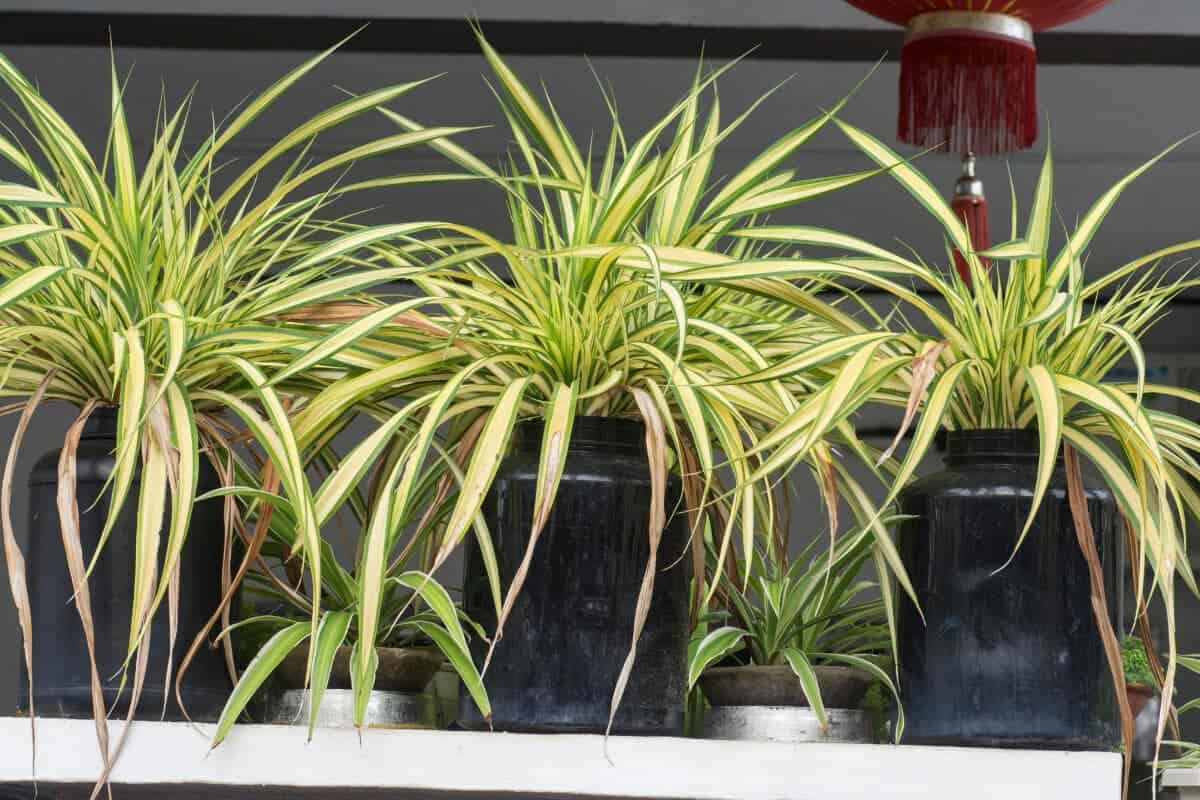
Spider Plants, also called Ribbon Plants, are very popular to grow as indoor plant.
Their defining characteristic is the baby plants they produce, which will dangle from the parent plant at the bottom of a long stem. This can create a very pleasing visual, with its trailing stems going down surfaces toward the floor.
The Spider Plant usually has green foliage, or sometimes striped with white, and can be about 18 inches long maximum.
Indirect sunlight, neutral, well-draining soils, and a temperature above 50°F are the ideal conditions for this plant.
10. Snake Plant (Dracaena trifasciata)
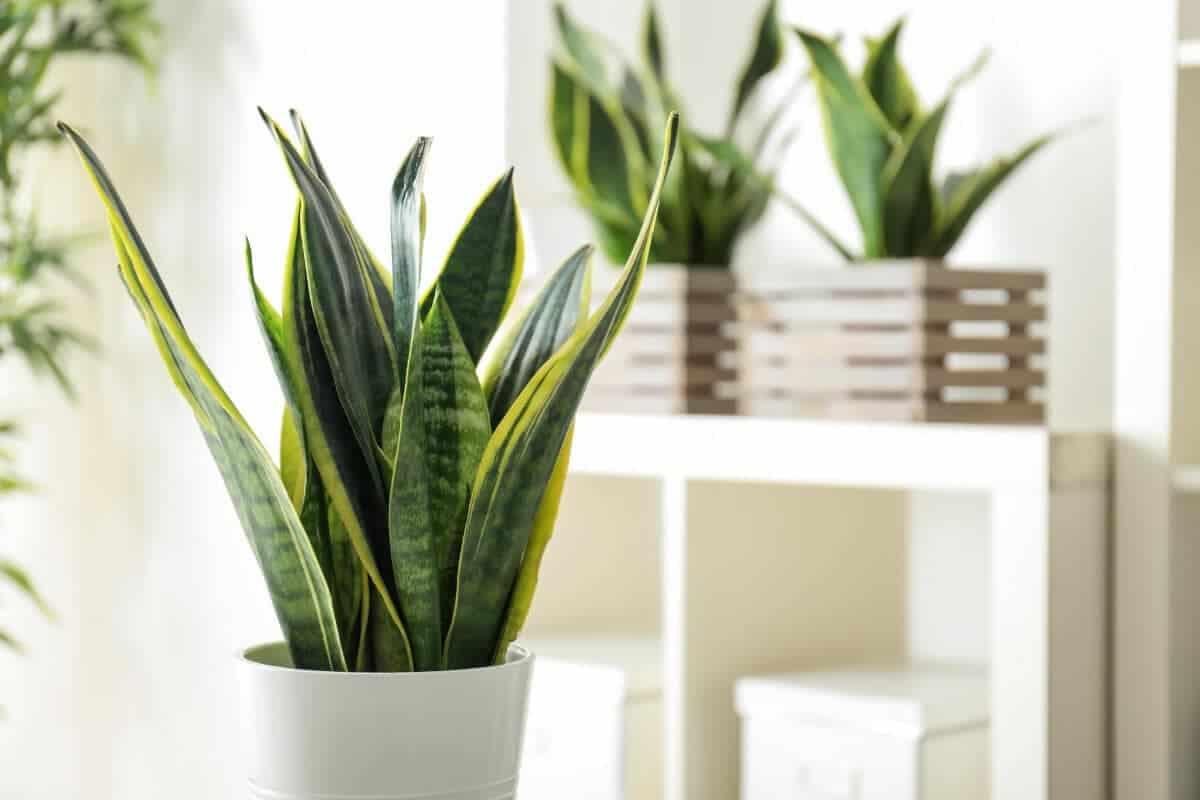
Mother-in-Law’s Tongue, or Snake Plant, was known as Sansevieria trifasciata, but currently has a botanical name of Dracaena trifasciata.
It’s a perennial succulent that can be over 3 feet long and with fleshy leaves that come in different colors, depending on the variety, but the most common one has green leaves with yellow margins.
If placed in an area with bright light, it will grow more erect and more beautiful leaves, but it can still live in low-light conditions. The full sun should be avoided though, especially in the summer.
Lastly, this plant is toxic to pets so keep it away from your pets, if you have one.
11. Dragon Tree (Dracaena marginata)
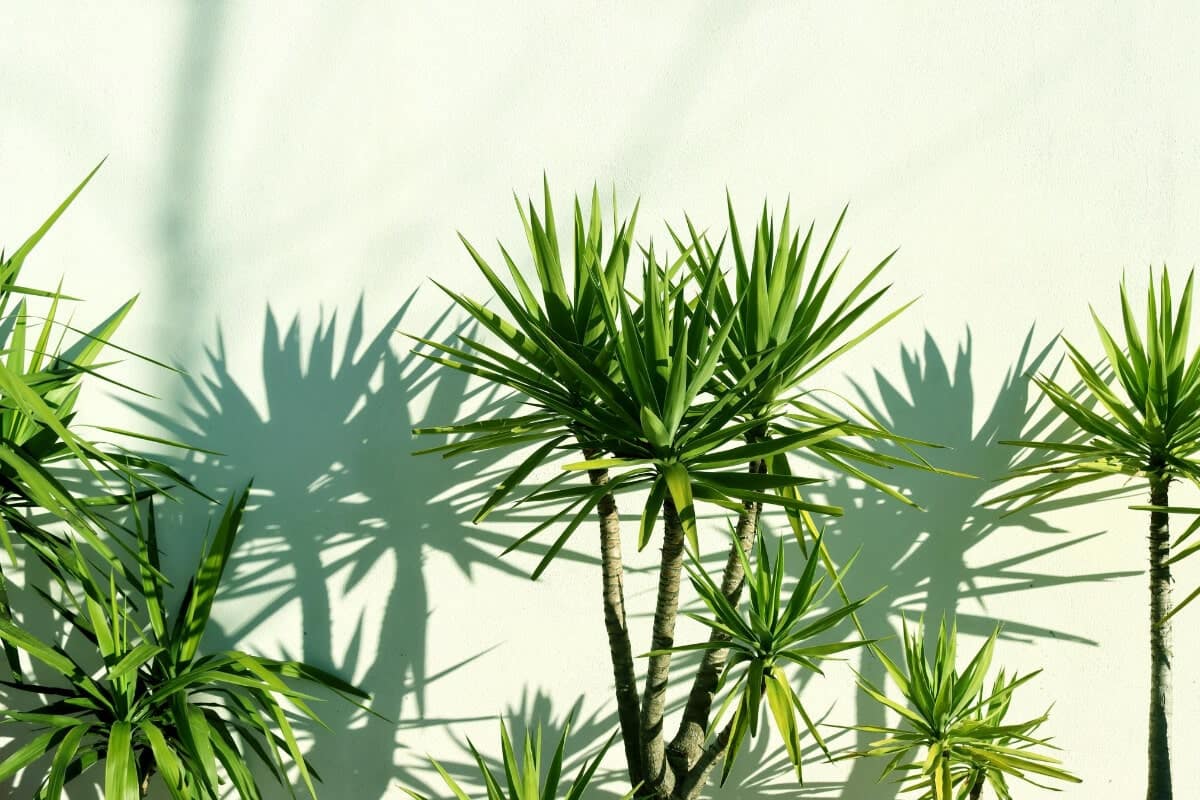
A close relative of Mother-in-Law’s Tongue, the Dragon Tree looks like a spiky palm tree. It has a long, thick stem, with all the leaves growing on top. The green, glossy leaves are narrow and sword-like, with red or white margins.
It’s a good plant to start with if you’re an average plant owner or if you’re new to household gardening as it’s extremely tolerant to drought and is nearly indestructible.
Just avoid overwatering it or placing it in full sunlight, and your dragon tree could grow 6 feet tall and produce beautiful white flowers in the spring.
Being a close relative of Mother-in-Law’s Tongue, be aware that the Dragon Tree is also poisonous to pets.
12. Yucca (Yucca elephantipes)
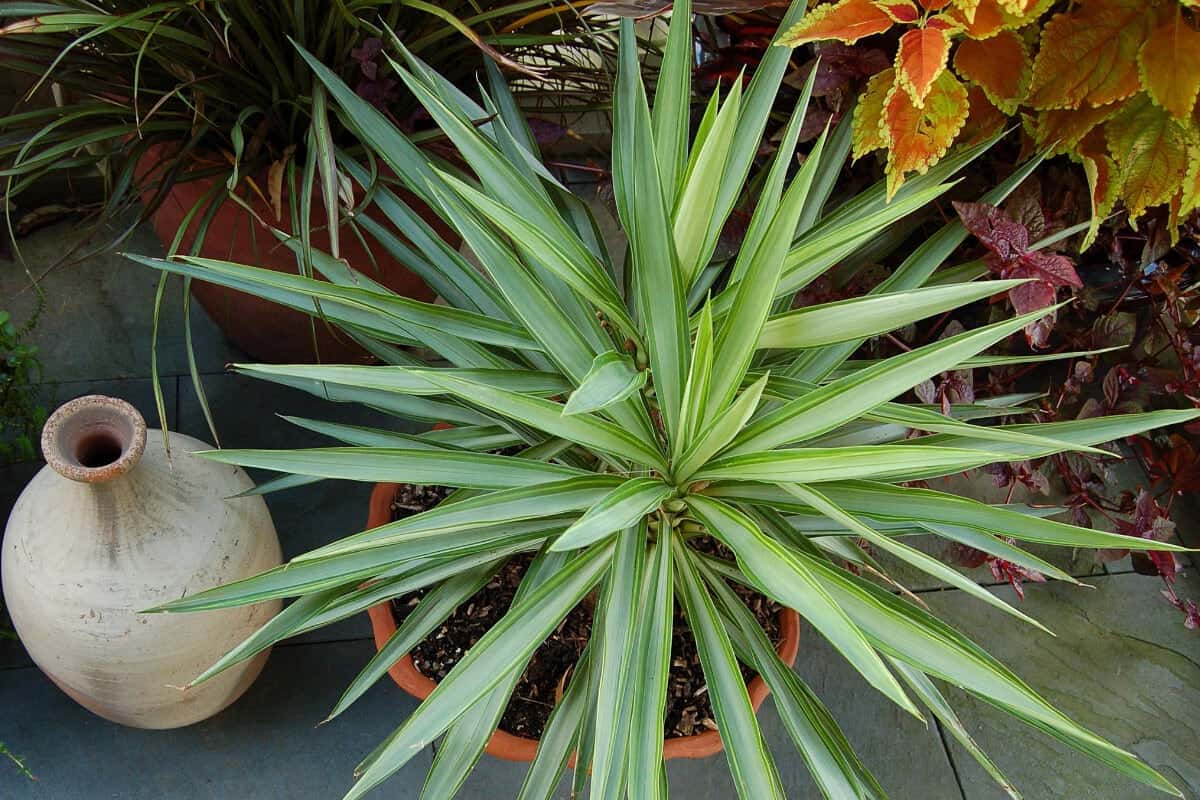
Yuccas have recently become very popular houseplants, thanks to their bold appearance and their long, leathery leaves.
They are similar to the Dragon Tree, but their leaves are much tougher and have pointed ends. If handled carelessly, they can easily puncture the skin.
Despite the fact that many Yucca species are easy to grow, the only one that can be found as a houseplant is the Yucca elephantipes.
This is because the others have razor-sharp margins that make them much too dangerous to keep in indoor spaces.
13. African Lily (Agapanthus africanus)
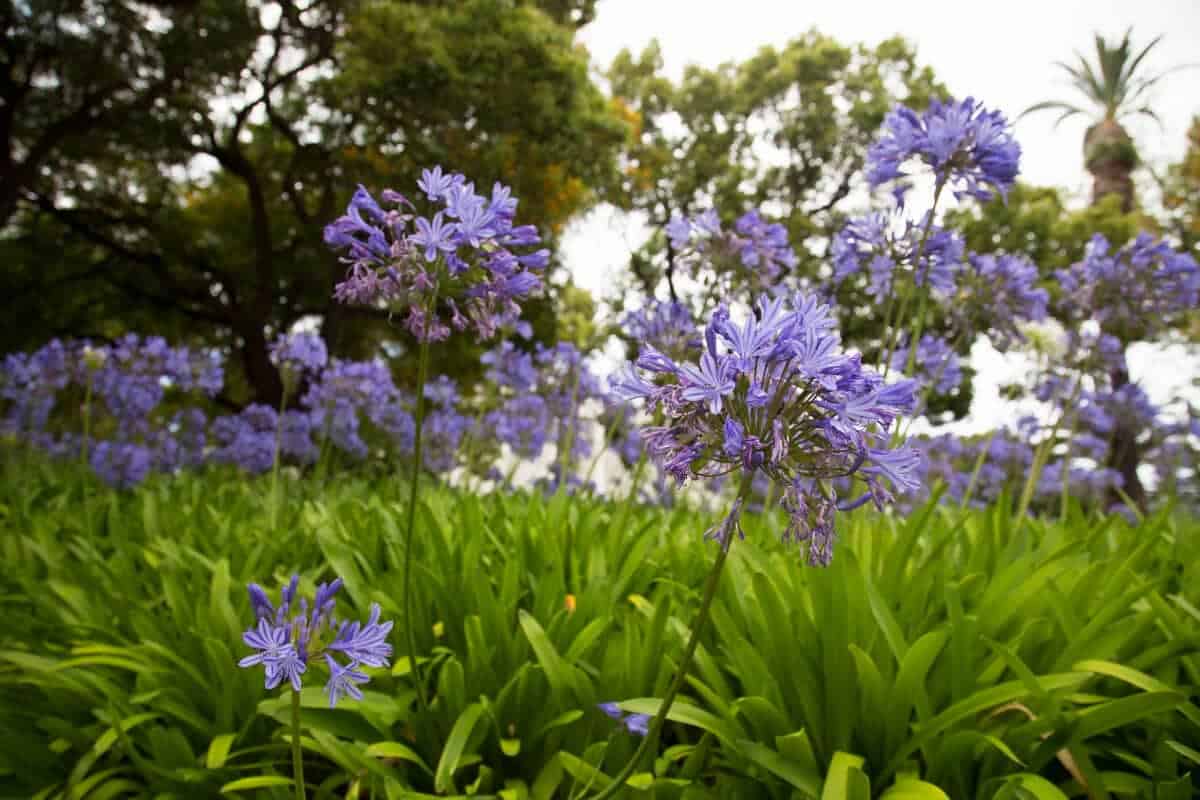
The African Lily is a tropical, perennial plant that loves full sun and doesn’t need much water. Its dark green leaves can be up to 30 inches long.
This rhizomatous plant is much appreciated because of its ability to produce two or three flowerings each season.
Its flowers are very delicate and similar to African Violets. Depending on the variety, its flowers can be blue flowers, or more rarely, even white.
The African Lily prefers warmth, but it’s frost-resistant, and it can survive temperatures as low as 17°F. This is why it’s also often cultivated outdoors where it’s a beautiful addition to any garden.
14. Banana-Leaf Fig (Ficus maclellandii)
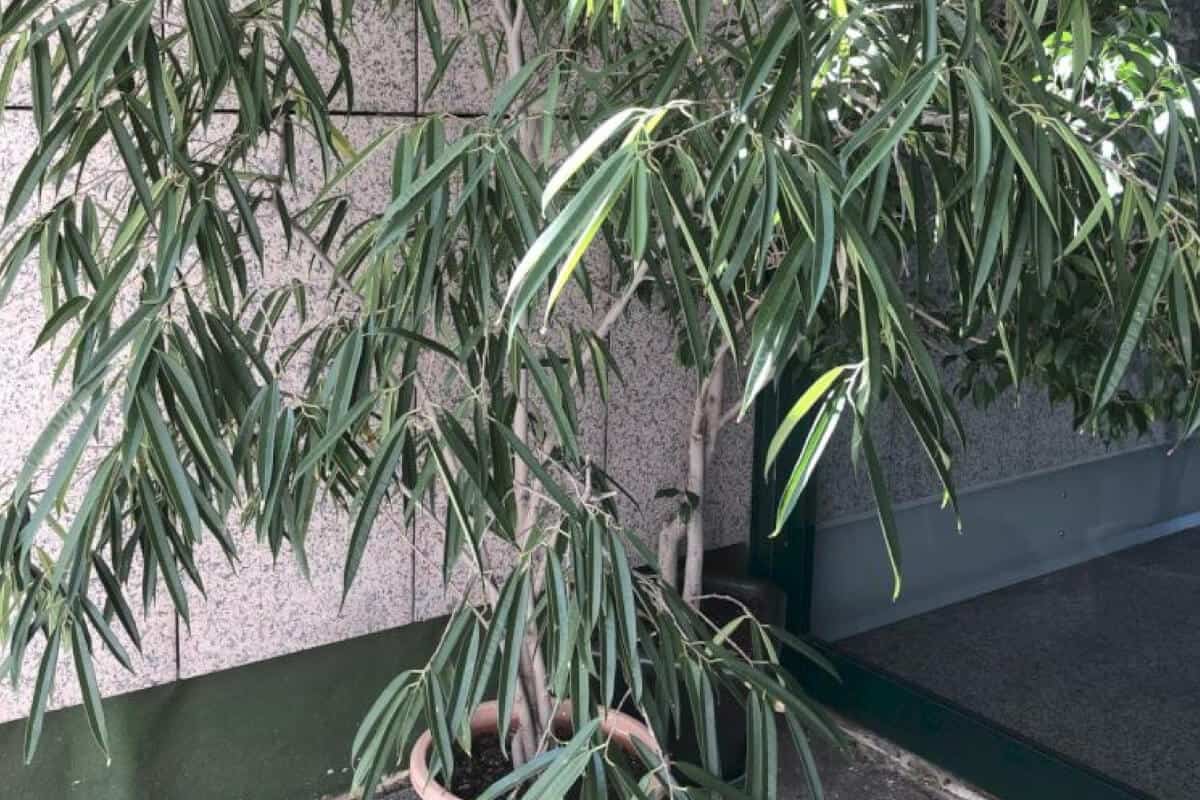
The Banana-Leaf Fig differentiates itself from other figs because of its long, narrow leaves. It’s a beautiful plant without particularly bright leaves or showy flowerings, but very elegant in its simplicity.
It’s much sturdier than the more famous Ficus benjamin, and rarely loses its leaves. It can adapt to low light conditions, but it prefers plenty of bright light.
The care conditions for Banana-Leaf Figs are giving it indirect light and controlled watering. Using a balanced fertilizer to keep it healthy and strong is necessary too.
15. Boston Fern (Nephrolepis exaltata)
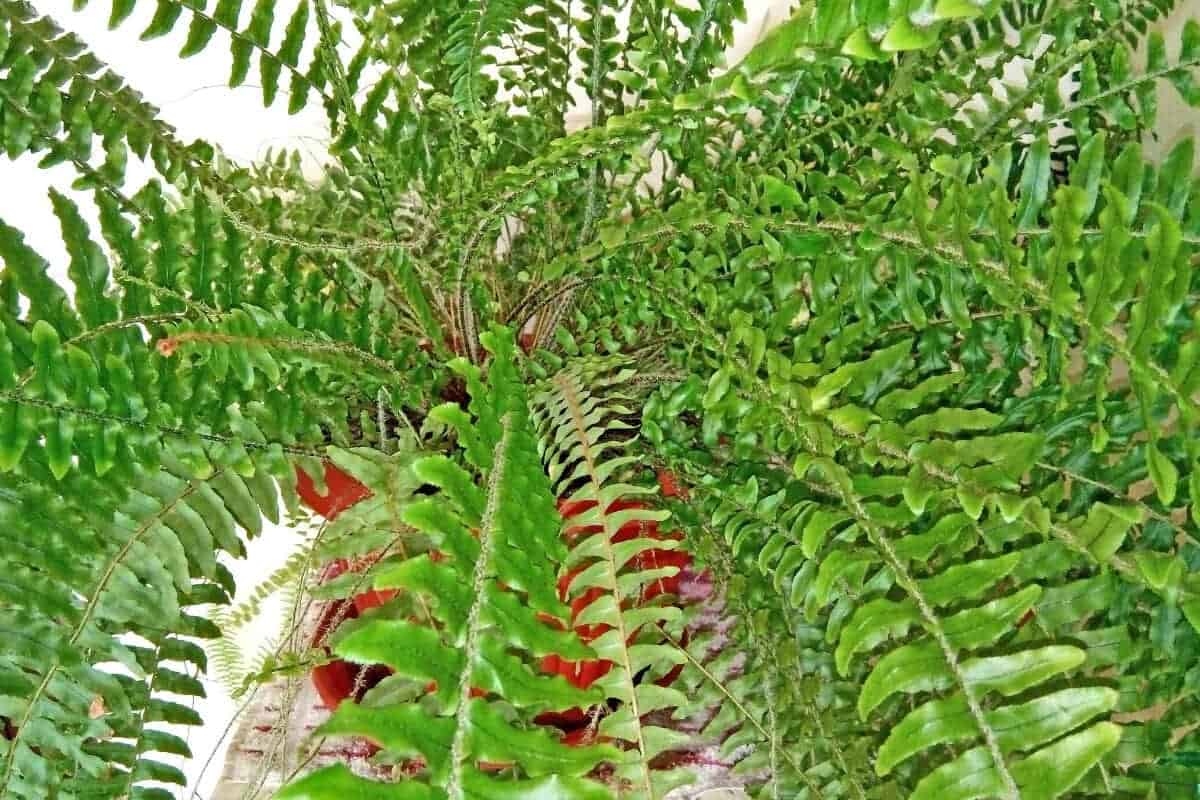
The Boston Fern has bright green fronds that curve downwards and form a lovely trail. Their lacy edges give it a soft, feathery appearance and make it a favorite both indoors and outdoors.
The Boston Fern needs moist soil and to be sprayed with water, especially during the summer. Its attractive foliage is plentiful and can be up to 3 feet long.
16. Rattlesnake Plant (Calathea lancifolia)
A popular choice among indoor gardening enthusiasts for its unique appearance and low maintenance needs, this stunning Calathea plant is commonly known as Rattlesnake Plant or Prayer Plant.
Its distinctive long and wavy leaves are adorned with deep green leaves and attractive patterns that resemble a rattlesnake’s skin.
Its leaves move up and down according to the light, giving it an almost life-like appearance, which is this Calathea variety’s most remarkable feature.
It’s an easy-care houseplant, making it an excellent choice for beginner gardeners. It prefers indirect bright light and moist, well-drained soil.
Too much direct sunlight or stagnant water can harm the plant, so it is vital to avoid overwatering and position it in a spot with bright filtered light.
Final Thoughts on Plants With Long Leaves
Plants with long leaves serve numerous purposes beyond their aesthetics as indoor houseplants.
These healthy plants help clean the air in homes and other living spaces, provide shade and prevent soil erosion.
Medicinal remedies, maintain a natural balance that fosters the growth of beneficial insects and animals, enhances biodiversity, and provides a sense of calm and well-being—the benefits of these plants are endless!
As we continue to coexist with nature, we must appreciate, protect, and create the best environmental conditions for these long-leaved plants that yield so many benefits to humanity and the planet!
To learn more about other houseplants, check out these other articles:

